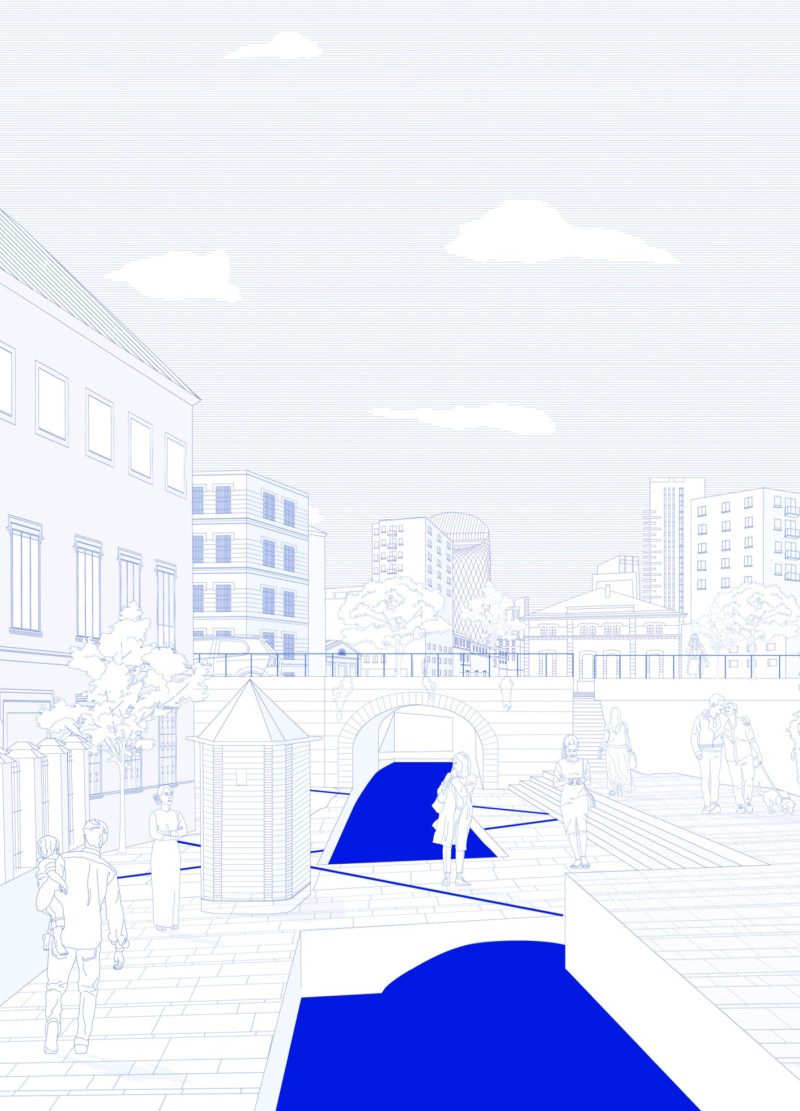5 key facts about this project
The design focuses on revitalizing the Navigli system in Milan, a city known for its historic connection to waterways. This initiative aims to reconnect urban spaces with the canals, highlighting the vital role of water in Milan's identity. The main idea is to transform the canal banks into lively public squares that encourage community interaction and exploration while enhancing the ecological and social dynamics of the area.
Design Approach
The main approach involves redesigning the banks of the Navigli into pedestrian-friendly spaces conducive to social interaction. By creating areas that allow people to gather along the waterways, the design integrates the canals into everyday life. It acknowledges the historical importance of the Navigli while providing practical pathways that help users navigate through the urban setting.
Materials and Visual Elements
Water-green slate stone is used to create a continuous pavement along the banks of the canals. This choice reinforces the connection between the built environment and the natural surroundings. The color and texture of the stone evoke the visual character of the waterways. Additionally, direction lines made of satin-finished brass are incorporated into the walkway, serving as guides for pedestrians and contributing to the visual appeal of the space.
Environmental Considerations
Green spaces play a significant role in the overall design, contributing to both the ecological quality of the area and user experience. These green areas provide shade, particularly beneficial during warmer months. They also enhance the local ecosystem. The project aims to create inviting social spaces that encourage interaction and foster a sense of community among residents and visitors.
Storytelling Through Design
The design incorporates elements that tell the story of the Navigli's history in relation to the present experience. Innovative paving patterns serve as informative markers, connecting users with the geographic significance of the waterways. Additionally, features providing historical context about the canals enhance the exploration experience for visitors, grounding them in the rich narrative of the site.
The design details include steps that facilitate smooth transitions between different levels. These steps help minimize noise and isolate pedestrian pathways from traffic. The careful adjustment of elevation creates new viewpoints along the Navigli, encouraging visitors to appreciate the relationship between the landscape and architecture.





















































